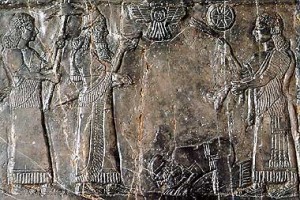Mad to See the Monuments, Steven W. Holloway, Bible Review (17:6) Dec. 2001.
In August of 1847, the British Museum mounted the first major display of Assyrian antiquities in England. For a year, the public had pored over sketches from Austen Henry Layard’s Mesopotamian excavations in the Illustrated London News. Now, it was possible to inspect the impassive, chiseled faces of the Assyrian kings during a comfortable excursion to the London museum. Victorian visitors could sate their curiosity at the knees—literally—of colossal human-headed bulls torn from the great palaces of Nimrud and Nineveh.
The exhibition was a phenomenal success. Samuel Birch, a British Museum officer and later the first president of the Society of Biblical Archaeology (no relation of the Biblical Archaeology Society, the American publisher of this magazine), wrote Layard in 1849: “All the world is mad to see the monuments—and the cry is ‘the bulls—the bulls.’”
It was not simply the novelty of the sculptures that attracted the crowds, but the triumphant recognition—as the curious wedge-shaped cuneiform inscriptions came to be deciphered—that these were the very Assyrian kings thundered against by the prophets of the Old Testament: Shalmaneser, Tiglath-pileser, Sargon, Sennacherib and Esarhaddon were all represented in stone.
Read the rest of Mad to See the Monuments on the Biblical Archaeology Society website.
What do you want to know?
Ask our AI widget and get answers from this website
